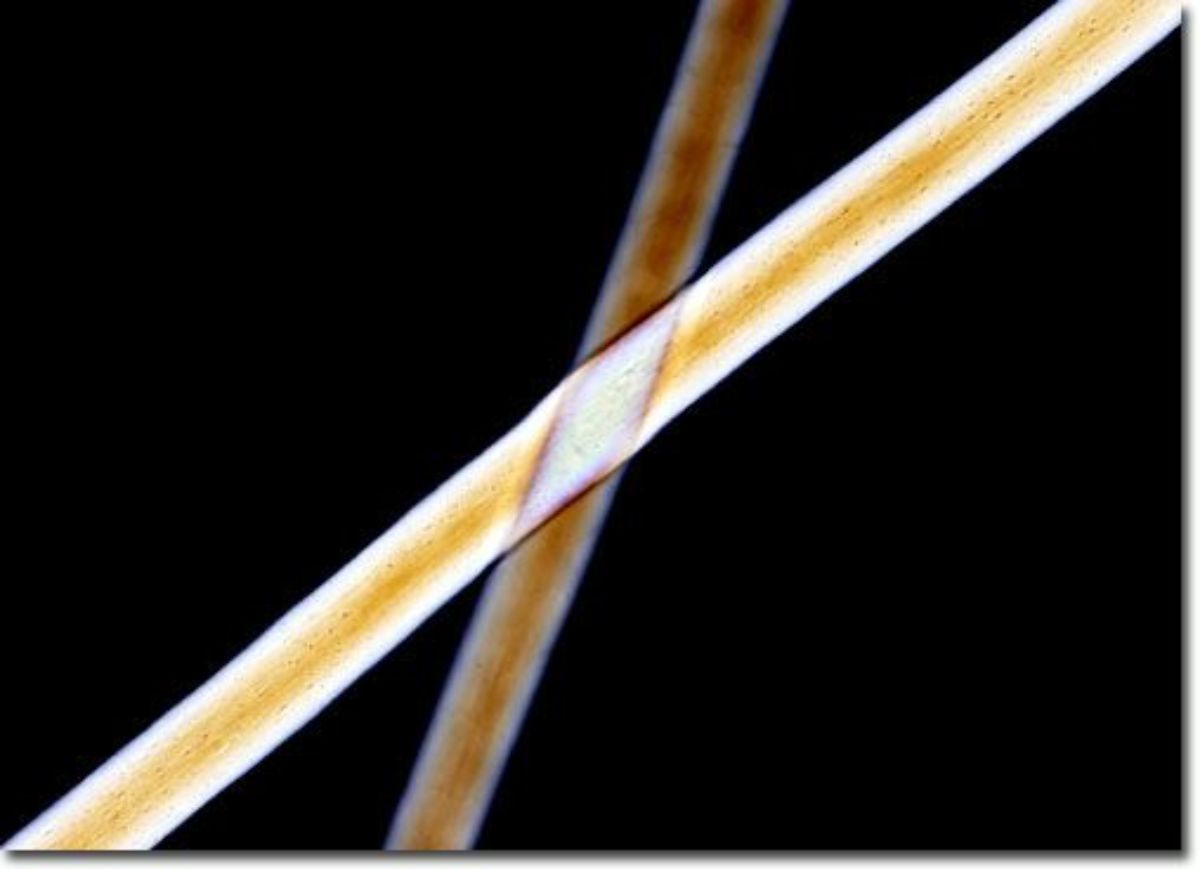Mohair
Description
Mohair is a silky white wool fiber that from the Angora goat, a breed of domestic goat, Capra aegagrus hircus. The angora goat is native to Turkey and Mohair was produced solely in Turkey for thousands of years, only becoming important in European textile manufacture during the 19th century. Angora goats are generally sheared twice a year. Their hair is mainly composed of long (5 - 12 inch) fibers that have flat, barely visible, overlapping scales. This makes the fibers very smooth and shiny. Mohair is strong, resilient, durable, and has good affinity for dyestuffs. The wool also contains 18% short fibers called kemp. These fibers are coarser and do not dye well. Mohair is susceptible to moths, but otherwise very durable. It is used for suits, clothing, draperies, upholstery, carpets, paint brushes, and paint roller covers.
Synonyms and Related Terms
angora; mukhayyar (Arabic); mockaire; Angoraziege (Deut.); chèvre angora (Fr.); angorageit (Ned.); mohair (Esp.) The goat itself was formerly regarded as a separate species: Capra angorensis
Risks
- Products from the domesticated form of Capra hircus (aegagrus) are not subject to CITES provisions per Appendix III.
- T he IUCN treats the wild and domestic goats as two separate species. The domestic population (Capra hircus) including the Angora breed, is not of concern and maintains a stable population.
Physical and Chemical Properties
- The center medulla is invisible in 99% of the fibers. Cross section is circular.
- The cortex of the fiber is striated throughout its length and often contains air-filled pockets.
- Fiber length = 5 - 8 inch.
- Fiber diameter = 25 to 45 micrometers.
- About 5-6 scales occur per 100 micrometers of fiber.
- Elongation = 30%
- Moisture regain = 13%
- Density = 1.32
Comparisons
Resources and Citations
- G.Cook, Handbook of Textile Fibres:I. Natural Fibres, 5th edition, Merrow Publishing Co., Durham, England, 1984.
- B.McGregor, Handbook of Properties of Textile and Technical Fibres; Part 4: Physical, chemical, and tensile properties of cashmere, mohair, alpaca, and other rare animal fibers, 2nd edition, Woodhead Publishing, 2018.
- CITES, Convention on International Trade in Endangered Species of Wild Flora and Fauna, at https://www.cites.org/ Comment: https://www.cites.org/eng/disc/species.php (accessed Oct 26, 2019)
- G.S.Brady, Materials Handbook, McGraw-Hill Book Co., New York, 1971 Comment: p. 515
- Hoechst Celanese Corporation, Dictionary of Fiber & Textile Technology (older version called Man-made Fiber and Textile Dictionary, 1965), Hoechst Celanese Corporation, Charlotte NC, 1990
- IUCN Red List, at https://www.iucnredlist.org/ (accessed Oct 26 2019)
- Rosalie Rosso King, Textile Identification, Conservation, and Preservation, Noyes Publications, Park Ridge, NJ, 1985
- J.Gordon Cook, Handbook of Textile Fibres:I Natural Fibres, Merrow Publishing Co. , Durham, England, 1984
- Edward Reich, Carlton J. Siegler, Consumer Goods: How to Know and Use Them, American Book Company, New York City, 1937
- The Dictionary of Art, Grove's Dictionaries Inc., New York, 1996 Comment: 'Mohair'
- Wikipedia: Mohair (Accessed Oct. 26, 2019 and March 2025)
- Encyclopedia Britannica, http://www.britannica.com Comment: "mohair" [Accessed 26 Oct. 2019].
- Richard S. Lewis, Hawley's Condensed Chemical Dictionary, Van Nostrand Reinhold, New York, 10th ed., 1993
- Random House, Webster's Encyclopedic Unabridged Dictionary of the English Language, Grammercy Book, New York, 1997




